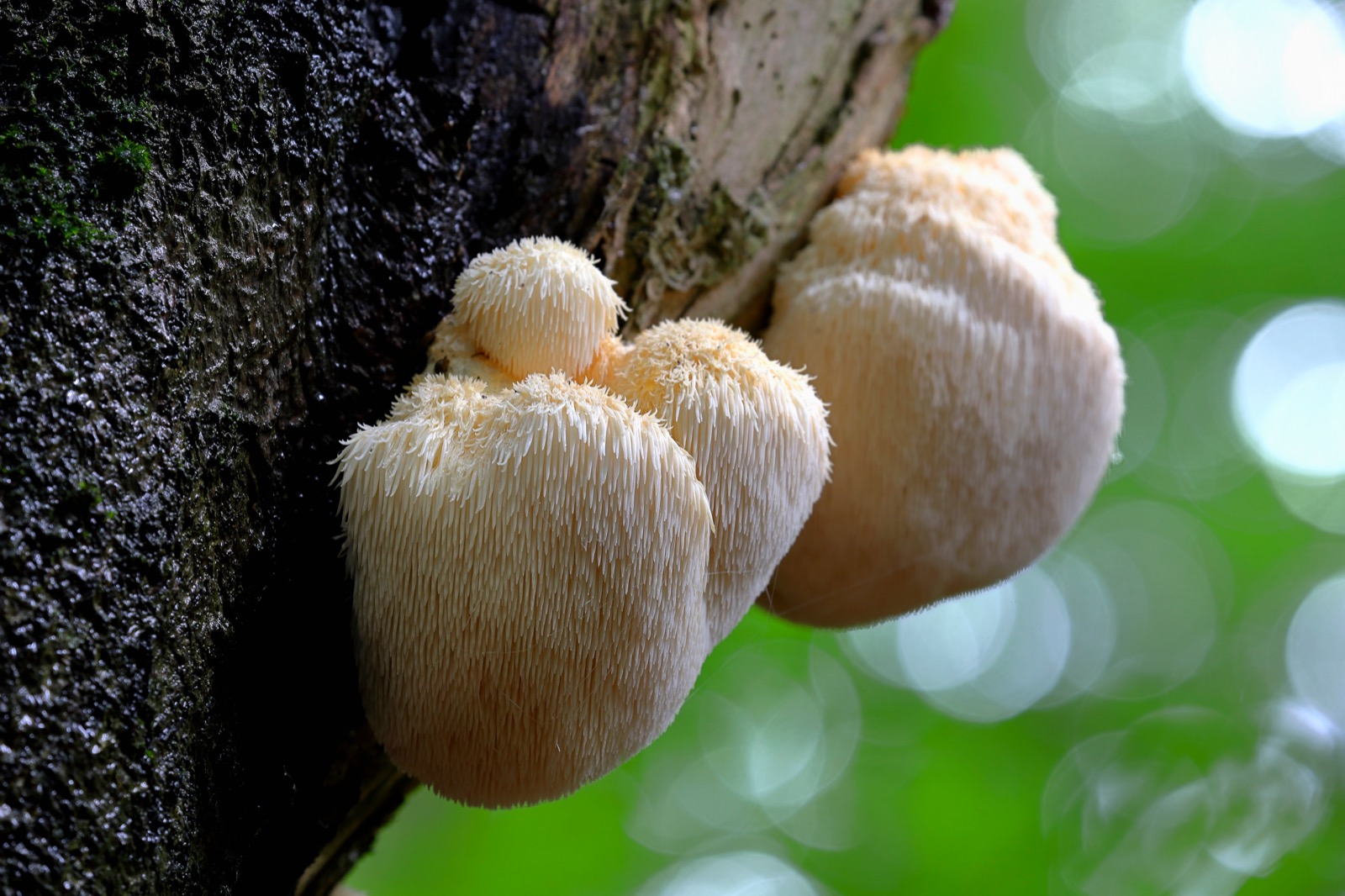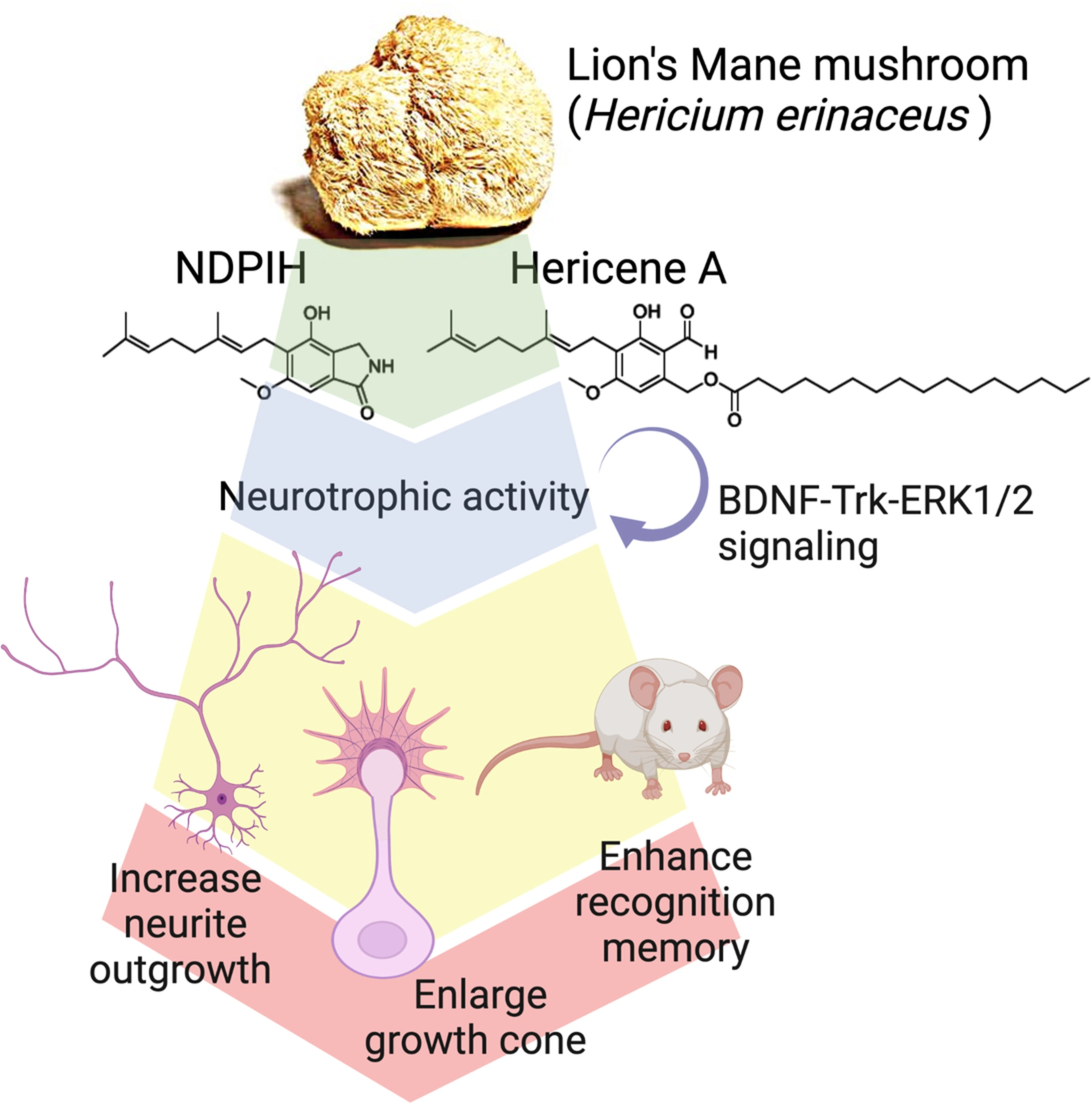Lion’s Mane Mushrooms Improve Memory, Study Finds
7:53 minutes

For centuries, the lion’s mane mushroom has been used in traditional Chinese medicine for a variety of ailments, including strengthening memory. A recent study from the Queensland Brain Institute confirms what herbalists have long said: There are properties of this mushroom that build brain cells. In mice, these properties promoted neuron growth when diluted in water, resulting in better hippocampal memory.
This result is a very good sign that the properties in lion’s mane mushrooms can protect against dementia and Alzheimer’s, the researchers behind the study say. Using the isolated components of the mushroom could be a step forward in the treatment of these devastating brain conditions.

Joining Ira to talk about this study is the study’s co-author, Dr. Ramon Martinez-Marmol, research fellow at the Queensland Brain Institute, based in Brisbane, Australia.
Dr. Ramon Martinez-Marmol is a research fellow in the Queensland Brain Institute in Brisbane, Australia.
IRA FLATOW: If you’re anything like me, you love a good mushroom, sauteed and a little butter, on top of pasta or pizza. For centuries, a special kind of mushroom has been used in Chinese medicine for improving memory, the lion’s mane mushroom, and now a study has confirmed what herbalists have long said. There are properties in the lion’s mane mushroom that build brain cells. Could the mushroom help protect against dementia and Alzheimer’s?
Joining me is the co-author of the study published in The Journal of Neurochemistry, Dr. Ramón Martínez-Mármol research fellow at the Queensland Brain Institute based in Brisbane, Australia. Welcome to Science Friday.
RAMON MARTINEZ-MARMOL: Thank you very much, Ira.
IRA FLATOW: Nice to have you. So you isolated brain-stimulating compounds. What exactly do these compounds do?
RAMON MARTINEZ-MARMOL: First of all, we just put them on top of neurons, isolated neurons from the brain of mice, and they start reacting so fast and they start growing much more than in normal conditions, and that was the first astonishing result that we got. We got contacted by a company from Korea, and they had several compounds purified from this beautiful lion mane’s mushroom.
I had to Google that the first time. I was like let me see. I love mushroom, but I haven’t hear about that before.
IRA FLATOW: Yeah.
RAMON MARTINEZ-MARMOL: And that they send them, and we set up some basic experiments to check the basic neurotrophic activity. And the results from the day zero were amazing.
IRA FLATOW: So you first tested it out in a petri dish, the compounds.
RAMON MARTINEZ-MARMOL: Yes.
IRA FLATOW: And when you found the ones that you thought were really work, you then fed them to the mice?
RAMON MARTINEZ-MARMOL: Yeah, that’s right.
IRA FLATOW: And what happened?
RAMON MARTINEZ-MARMOL: Well, the way it’s done is we set up some experiments on behavioral experiments try to check their memory, tried to check their activity if they were more active, less active, if they could remember a little bit more. So the way those experiments work is you put an animal in the middle of a box with two objects. The animal just starts moving around, and then you change one of the objects, put the animal with a different one, and the animal they have to show more attraction for the new one. And this is a kind of classic behavioral test for recognition and remembering what is old and what is new. And what happens is that when we provide this compound, the animals show much more interest in the new objects, and that’s a clear proof of increasing in memory.
IRA FLATOW: Were you able to tell what was going on in the brains of these mice?
RAMON MARTINEZ-MARMOL: Well, based on the individual results, we found out that we were enhancing what we call neurotrophic activity. So neurotrophins, they are molecules that our brain cells release, and this happens usually during growth. When our brain is formed, there is a lot of release of this neurotrophin, and that’s what makes neurons grow and extend and reach their final targets. They are new. They have to grow very long distance, and they do that through signaling molecules and through what we call neurotrophins that enhance that growth. So we found out with an in vitro experiment that these compounds were working through a kind of neurotrophic-like activity.
IRA FLATOW: So in lay– how would you describe that in layman’s terms?
RAMON MARTINEZ-MARMOL: So it’s kind of feeding the neurons. So the neurons, they have to grow, they have to feed themselves, and they secrete substances that they are going to make them grow faster. Without those, the neurons don’t grow. The brain do not– do not develop. There’s lots of neurodevelopmental disorders associated with the lack of these neutrophins.
So it’s something that the neurons, they produce kind of hard to feed themselves and to make them grow more. So the cool thing of the story is that somehow, the compound that we associate from mushrooms could mimic that activity.
IRA FLATOW: I’m Ira Flatow, and this is Science Friday from WNYC Studios.
So it mimics the activity of feeding the neurons, and the neurons grow?
RAMON MARTINEZ-MARMOL: Yes. This growing of neurons is something that happens naturally when we are growing, but when we reach my age, when we get older, that activity starts to stop. So the challenge of neuroscience has been to try to promote this growing activity even in those periods where this is stopped like, for example, thinking this may be useful for dementia, this may be useful after a stroke, for example, to promote these regrowth of new neurons.
And that’s why we– when we found this activity, we start thinking ahead like this is going to be good for in the future maybe for Alzheimer’s or maybe for a stroke, maybe for other diseases.
IRA FLATOW: When could we see this tested out in people? It sounds so promising here.
RAMON MARTINEZ-MARMOL: Yeah, it’s already happening in Korea. So we were collaborating with two universities in South Korea, and they already have started having clinical trials in healthy people first to check for these neurotrophic activity.
IRA FLATOW: This has been talked about in herbal medicine and folklore, and people have been using this for years, eating these mushrooms believing it improves memory. You think you have justified those beliefs now?
RAMON MARTINEZ-MARMOL: Well, based on our data, yes. If we purify the compound from the same mushrooms and it has some positive effects on growing neurons and enhancing memory, yes. But I think this is always the same. So there are lots of belief in traditional medicine not from China but from many other countries. And it’s simply there’s not enough research behind to try to purify those molecules and then know what’s going on.
IRA FLATOW: Do you know in humans how many mushrooms people could be eating because I know when this gets out and we talk about this, there’s going to be a run on this mushroom. The price is going to skyrocket.
RAMON MARTINEZ-MARMOL: Yeah. So we don’t know. So from the mushroom to the purified compound, I don’t know how many of these compounds can came from one mushroom. If you eat one mushroom, I don’t know how much of this compound is going to reach your brain, which was the second cool thing. So this is a lipophilic molecule, well diluted in lipids, all our cells the membrane of our cells what separates our cells in the whole body. From the outside is a lipid bilayer.
And one of the cells that have more membranes are the neurons. The amount of membrane that they have is huge, and it’s amazing. Plus the brain is covered by a membrane called the blood brain barrier that prevents and isolate the brain from the exterior, and I’m calling the exterior from the inside of our body. It’s very hard from the blood to reach anything inside of the brain, and that’s the challenging thing for pharmacists to make molecules that can effectively pass through this blood brain barrier and reach the inside of the neurons. And the cool thing is that molecule is lipid soluble, so that could go through this barrier and reach the inside of the brain very fast. And that was the second cool thing that why we were so interested in this specific molecule.
IRA FLATOW: Well, we will keep in touch– is that OK– to find out how this is progressing.
RAMON MARTINEZ-MARMOL: Yeah, of course. Definitely.
IRA FLATOW: Thank you very much for taking the time to be with us today.
RAMON MARTINEZ-MARMOL: And thank you very much for calling.
IRA FLATOW: Dr. Ramón Martínez-Mármol, research fellow at the Queensland Brain Institute based in Brisbane, Australia.
Copyright © 2023 Science Friday Initiative. All rights reserved. Science Friday transcripts are produced on a tight deadline by 3Play Media. Fidelity to the original aired/published audio or video file might vary, and text might be updated or amended in the future. For the authoritative record of Science Friday’s programming, please visit the original aired/published recording. For terms of use and more information, visit our policies pages at http://www.sciencefriday.com/about/policies/.
Kathleen Davis is a producer and fill-in host at Science Friday, which means she spends her weeks researching, writing, editing, and sometimes talking into a microphone. She’s always eager to talk about freshwater lakes and Coney Island diners.
Ira Flatow is the founder and host of Science Friday. His green thumb has revived many an office plant at death’s door.